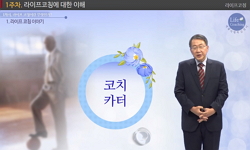In this study, we consider about the usage aspect of 'Haseyo' style, the one of the Speech level in the Listener treatment rule. The discussion of ‘Haseyo’ was on going since late 1960's partially, yet the fact is that, the scholars have different...
http://chineseinput.net/에서 pinyin(병음)방식으로 중국어를 변환할 수 있습니다.
변환된 중국어를 복사하여 사용하시면 됩니다.
- 中文 을 입력하시려면 zhongwen을 입력하시고 space를누르시면됩니다.
- 北京 을 입력하시려면 beijing을 입력하시고 space를 누르시면 됩니다.
https://www.riss.kr/link?id=A76123836
- 저자
- 발행기관
- 학술지명
- 권호사항
-
발행연도
2004
-
작성언어
Korean
-
주제어
‘하세요’체 ; 친밀감 ; 비격식성 ; 화계 ; ‘Haseyo’ style ; Intimacy ; Informality ; and Speech level
-
등재정보
KCI등재
-
자료형태
학술저널
- 발행기관 URL
-
수록면
63-74(12쪽)
- 제공처
-
0
상세조회 -
0
다운로드
부가정보
다국어 초록 (Multilingual Abstract)
For the research of ‘Haseyo’ style usage aspect, we did the survey 500 university students as the subject of study. In the survey, 90% of students, they used more 'Haseyo' style than ‘Hasipsiyo’ style. Also, the Speech level for their father, they nearly didn't use the Speech level, ‘Hasipsiyo’ style, showing as the under 1%. Most of them used ‘Haseyo’ or ‘Haeyo’ style for their fathers. As we can see here, the use of 'Haseyo' is predominant nowadays. Therefore ‘Haseyo’ style can be set up the Speech level in the Listener treatment rule.
Up to now, we consider about the advent condition, usage aspects and the set up the Speech level of ‘Haseyo’ style. The arrangement of the contents of the above study is as below.
1) ‘Haseyo’ style is the first new Speech level, which is shown the intimacy and informality.
2) The study is showing that 90% among university students, they use more ‘Haseyo’ style than ‘Hasipsiyo’ style.
3) ‘-Si-’, known as the mark of subject respect, it is materialized in the Listeners treatment.
4) ‘Haseyo’ is used in normal, question and imperative sentences.
In this study, we consider about the usage aspect of 'Haseyo' style, the one of the Speech level in the Listener treatment rule. The discussion of ‘Haseyo’ was on going since late 1960's partially, yet the fact is that, the scholars have different opinions about the set up the Speech level. Therefore the study of the standardization for the Speech level in the Listener treatment rule, regarding the changes based on the region and society, it is very significant works.
For the research of ‘Haseyo’ style usage aspect, we did the survey 500 university students as the subject of study. In the survey, 90% of students, they used more 'Haseyo' style than ‘Hasipsiyo’ style. Also, the Speech level for their father, they nearly didn't use the Speech level, ‘Hasipsiyo’ style, showing as the under 1%. Most of them used ‘Haseyo’ or ‘Haeyo’ style for their fathers. As we can see here, the use of 'Haseyo' is predominant nowadays. Therefore ‘Haseyo’ style can be set up the Speech level in the Listener treatment rule.
Up to now, we consider about the advent condition, usage aspects and the set up the Speech level of ‘Haseyo’ style. The arrangement of the contents of the above study is as below.
1) ‘Haseyo’ style is the first new Speech level, which is shown the intimacy and informality.
2) The study is showing that 90% among university students, they use more ‘Haseyo’ style than ‘Hasipsiyo’ style.
3) ‘-Si-’, known as the mark of subject respect, it is materialized in the Listeners treatment.
4) ‘Haseyo’ is used in normal, question and imperative sentences.
목차 (Table of Contents)
- Ⅰ. 緖論
- Ⅱ. ‘하세요’체의 출현 조건
- Ⅲ. ‘하세요’체의 사용 양상과 화계 설정
- Ⅳ. 結論
- 參考 文獻
- Ⅰ. 緖論
- Ⅱ. ‘하세요’체의 출현 조건
- Ⅲ. ‘하세요’체의 사용 양상과 화계 설정
- Ⅳ. 結論
- 參考 文獻
- Abstract
동일학술지(권/호) 다른 논문
-
- 중앙어문학회
- 이유미(Yi Yu-mi)
- 2004
- KCI등재
-
- 중앙어문학회
- 安仁淑(An In Suk)
- 2004
- KCI등재
-
- 중앙어문학회
- 정상근(Jeong Sang-gun)
- 2004
- KCI등재
-
- 중앙어문학회
- 조국래(Cho Guk-rae)
- 2004
- KCI등재





 DBpia
DBpia


